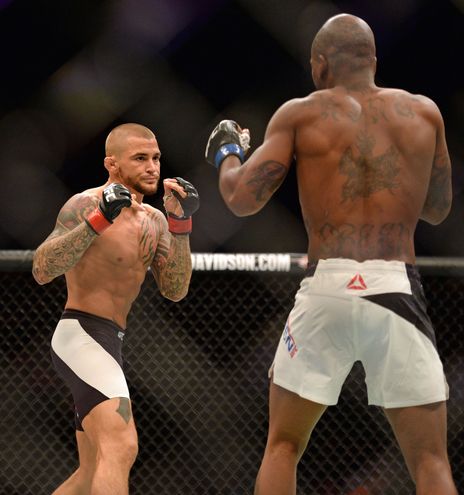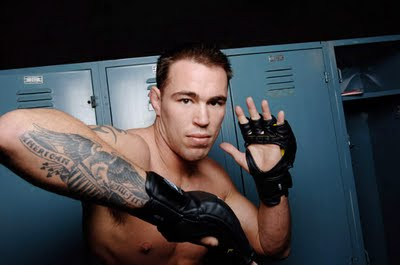Shocking news emerged from Brazil on Thursday, as pro fighter Leandro “Feijao” Souza of the famed Nova Uniao academy died during the final stages of his weight cut on the morning of weigh-ins for Shooto Brazil 43. Souza’s teammates are of the belief that the excessive weight cut was to blame for the fighter’s death, but as of right now, the autopsy for Mr. Souza is unavailable. This death highlights the risks of excessive weight-cutting, and ultimately raises questions about whether, in a sport as dangerous as mixed martial arts, such risks are worth accepting as part of the everyday dangers of the sport.
In light of the terrible news from Brazil, I decided to talk to former UFC fighter and current Bellator fighter Tom DeBlass, who in the past has made the cut to 185 pounds from over 215 pounds, and is in a position to offer his insights into the mindset of a fighter who undertakes such a course of action. I first asked Tom what his thought process was when he decided to cut to 185 pounds following his loss to Cyrille Diabate at UFC on FUEL TV 2, and he said:
“Well they don’t get much bigger than Cyrille. I know it was 10 days notice but he didn’t feel stronger. He was however much taller! I figured cutting to 185 I would be against guys more my size”.
I’m of the opinion personally that promotions shouldn’t offer fighters fights on such short notice, especially in other continents, as I believe the effects of drastic weight cutting are exacerbated by long distance flights. Cutting a lot of weight on short notice is never good, not only for the fighter, but also for the fans,. Who can forget Chris Weidman vs. Demian Maia? That was one of the worst bouts in recent history, as Weidman was severely fatigued from a massive cut.
Tom’s loss to Diabate marked the first of his MMA career, and the New Jersey native knew he needed to make a drastic decision in order to remain in the UFC. So when Joe Silva offered him a fight against Riki Fukuda in Macau, he jumped at it. I asked DeBlass whether prior to his bout with Fukuda he had made a trial cut to middleweight, and he responded:
“I did not. So my first cut to 185 was in China. Stressful because we didn’t know the kind of food they had.”
Because DeBlass comes from an established camp of fighters, I know his cut was well-managed, but I believe less experienced fighters who decide to cut a weight class should attempt a trial cut first. And truthfully, even many veteran fighters could benefit from one. Remember how emaciated James Irvin looked against Igor Pokrajac?
During DeBlass’ illustrious jiu jitsu career, he always competed as a super heavyweight, so he was used to walking around heavy. I asked him what he weighed prior to his cut for UFC on FUEL TV 6, and he said that he was walking around at 215, and got to Macau at 203. I then asked Tom how the UFC looked after him during his weight cut, and he said:
”
UFC was helpful by putting us in an amazing hotel with many food options. I also had great help from Walt Power, the first American to open a casino in Macau. He took a liking to me and brought me all the food I needed. He had water delivered to my room daily for the water cut.I was working with a nutritionist at the time and did everything by the book. I was able to rehydrate completely after the cut and hot baths and I don’t think it affected me during the fight at all. I am not sure, however, the long term effects cutting so much weight in short periods of time will have on someone’s health. Cutting weight and those hot baths are torture.”
This point particularly means a lot, The UFC is the best in the world and the people there care for their fighters far more than any other promotion, but many lower level fighters try to replicate weight cuts without the facilities UFC fighters are afforded. I have seen it on numerous occasions on the European amateur circuit, as some fighters will routinely cut 20 lbs in 7 days before fights, but the risks far outweigh the benefits in regards to weight cutting.
DeBlass fought once more at 185 pounds, against Carlos Brooks in Bellator, but after that fight he decided it was time to make the return back to 205.
I asked him if following the death of Souza this week he had any reservations about cutting weight, and he said:
“Yea, I believe if I cut to 185 again I will get my walk around weight to around 200 lbs first. Right now I’m 220 and my next fight is at 205. My last fight was a super tough cut to 185; I cut too much. I went from 202 to 186 in less than 24 hours. But my walk around weight was 215. So I’d like to be within 10 lbs when I start my final cut.”
When I asked Tom if he would ever return to middleweight, he said:
“To be honest I don’t know. I put on some muscle since last fight and I compete at heavyweight in grappling and Jiu-Jitsu. I’m more comfortable at 205 so very well may stay here.”
DeBlass is an elite martial artist, and if he worries about the long-term effects of weight cutting, others should as well. Something should be done to stop amateur and inexperienced fighters from willingly risking future kidney problems, or immediate repercussions, as was the case with Souza. Although it is unlikely that we’ll see a UFC fighter suffer the fate of Leandro Souza while in the promotion, fighters attempting to get there, and fighters attempting to get back there, are susceptible to these dangers, and incidents like these can tarnish the perception of the sport, and hinder its growth, not to mention cost lives.







Thx for a good post. I'd like to invite you to our community here where we talk about MMA and BJJ gear. Please share your experiences, stories, tips and ideas with other people like you in our community. It's all about sharing and giving. Lets take this sport to the next level! Or you can visit our short sleeve rash guard site to find out more about who we are.
Excellent article about a bad practice adopted from amateur wrestling that I feel is the biggest problem in MMA right now over PEDs and judging. I can't believe that it would be that hard to monitor fighter's weights for a week or so before the fight and then have weight checks just prior to the fights with a VERY limited allowance so that we get fighters who actually walk around MUCH closer to the weight class limits. It would help MMA in the long run.